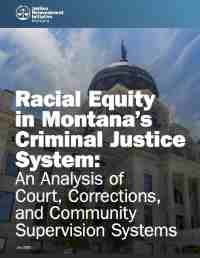By Advancing Pretrial Policy and Research (APPR)
The pretrial system has, in recent years, become a focus of attention for governments, civil rights advocates, the media, and nonprofit organizations. Understandably so: it is the front door of the criminal legal system, and decisions made in the early stages of a criminal case have major impacts on everything that follows. As Berkeley law professor Caleb Foote wrote in 1956, “Pretrial decisions determine mostly everything.” This adage is true for individual cases: whether or not someone is detained while awaiting trial has major impacts on whether they are found guilty, whether they are sentenced to incarceration, and how long those sentences are.Unnecessary detention can also disrupt lives, leading to lost jobs and housing, family instability, and even increased likelihood of rearrest. It is also true for the system as a whole: virtually all of the growth in the U.S. jail population in the 21st century is attributable to pretrial incarceration. Housing people before trial costs county and state governments at least $14 billion annually. So, it is critical that we get pretrial decisions right. But in most of the country, the pretrial system is deeply flawed. There is an overreliance on custodial arrest instead of citations or summonses; release and detention are determined more by money than by judicial officers making intentional decisions about public safety or flight; defense counsel is not present, despite someone’s liberty being at stake; and pretrial services focus on monitoring rather than supporting people in the community. In addition, like the rest of the criminal legal system, the pretrial system suffers from systemic racism, with Black, Indigenous, and People of Color (BIPOC) disproportionately arrested and booked, subjected to higher financial conditions of release, and more frequently detained. These practices result in many people who could safely be released remaining in jail, often for long periods. And they do not enhance—and frequently undermine—community safety and well-being. Improving the pretrial system requires a comprehensive approach; we cannot focus on a single decision point or a single agency. And the problems will not be fixed with a single solution such as an actuarial assessment tool or even the abolishment of financial conditions. Rather, we need to look at the system as a whole, involve policymakers from all agencies, and engage the community meaningfully in the improvement process.
Silver Spring, MD: Advancing Pretrial Policy and Research (APPR) , 2022. 29p.





















